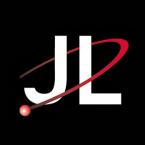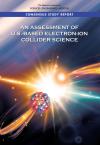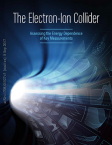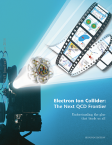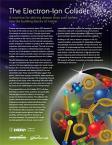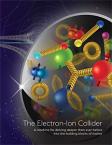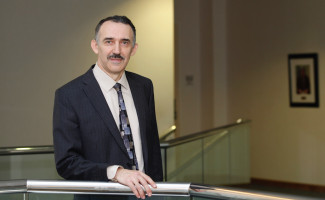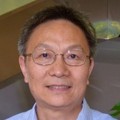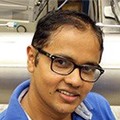“Triz” Behind the Trees Helps Fuel Seryi’s Creative Pursuit
From a very young age, Andrei Seryi had a penchant for thinking differently.
At three years old, he taught himself how to read – upside down – as his grandmother read him children’s stories.
“She would read by holding the book in her lap, and I sat across from her,” said Seryi, the associate director for Accelerator Operations, Research and Development at the U.S. Department of Energy’s Thomas Jefferson National Accelerator Facility. “No one taught to me read consciously. I would just follow along as she turned the pages.”
Thinking differently served Seryi well. The pursuit of innovative solutions to particle physics’ challenges is a constant in Seryi’s distinguished career, which includes tenures at DOE’s SLAC National Accelerator Laboratory (SLAC), DOE’s Fermi National Accelerator Laboratory (Fermilab), Oxford University and the John Adams Institute for Accelerator Science before he arrived at Jefferson Lab in 2018.
However, an unlikely confluence of his knowledge and expertise occurred during his time at Oxford and the John Adams Institute. There, he added “author” to his lengthy list of accomplishments.
Seryi’s writing of the textbook “Unifying Physics of Accelerators, Lasers and Plasma” was a full-circle experience, connecting concepts he absorbed as a science-fascinated child, his academic and scientific prowess, and the love of his life.
The son of a coal mining engineer in the former Soviet Union, Seryi was drawn to science through reading. Books about the mysteries of the universe captured his imagination when he was 10 years old. Three years later, he discovered a book that changed the trajectory of his life. Written in the style of a detective novel, it introduced young readers to nuclear science and particle physics. Enthralled, Seryi delved deeper and discovered books about quarks and neutrinos.
Concurrently, Seryi loved building things with his hands and was an avid reader of technical journals designed for children. The pieces posed engineering problems, prompting the reader to develop solutions.
“I remember this question; ‘Imagine you have to measure the temperature of an ant,’ but ants are very small, and you have a thermometer that is much larger,” Seryi recalled. “The answer was that you put many ants in a glass and put the thermometer in the glass, and off you go.”
For his last two years of high school, Seryi enrolled in an advanced physics and math program. He rose to the top of his class – an honor shared by Elena Seraia, nee Lebedinskaia, who would become his wife and current collaborator.
In their final year of high school, Seryi and Seraia began dating and became quite the power couple: Both won the program’s penultimate science competition, which fast-tracked them for university admission. They agreed to attend Novosibirsk State University, where Seryi studied physics and Seraia studied biology.
In the years that followed, the couple embarked on successful careers in their respective fields while raising two daughters.
Seryi’s family made their first move to the United States in 1998. After a year at Fermilab, he landed a position at SLAC, where he led the establishment of the Facility for Advanced Experimental Tests. Meanwhile, Seraia shifted from biology to detector technology at Fermilab before working in genomics at Stanford University.
In 2009, the family moved to England, where Seryi accepted a professorship at Oxford and became the director of the John Adams Institute, a postgraduate research collaboration between Oxford and Royal Holloway University of London. During his tenure, he brought Imperial College London into the institute, which today graduates up to 10 physics Ph.D.s per year. Seraia continued her work in genomics at Oxford.
(Re)enter TRIZ
Though he didn’t know it by name at the time, Seryi was exposed to a problem-solving methodology in the technical journals he read as a preteen that he would rediscover in London.
TRIZ (pronounced “trees”), a Russian acronym that translates to “Theory of Inventive Problem Solving,” presents four findings based on Genrich Atlshulter’s analysis of thousands of patents: The same problems and solutions appear across different industries; there is a recognizable technical evolution path for all industries; innovative patents – only about 25% of the total – used science and engineering theories from outside of their industry; and an innovative patent uncovers and solves contradictions.
“The combination of John Adams’ three groups all come from different backgrounds with different sets of knowledge – conventional accelerators, lasers and plasma physics,” Seryi said. “I began to realize that they needed to cross-learn from each other. But, also, they needed a method to inspire them to be more creative.
“So, I started studying and reading about methods that could stimulate creativity. Then, somehow, I came across the mention of TRIZ, which I learned about when I was a child but didn’t realize it until then. I read the description, and I thought, ‘Well this is interesting; I see that’s used in industry and engineering, but not so much in science.’”
Inspired to adapt TRIZ to accelerator science, Seryi considered developing lectures on the topic. He shared the idea with William Barletta, then the director of the U.S. Particle Accelerator School (USPAS), who encouraged Seryi in 2014 to create a one-week course for USPAS. Seryi agreed and began drafting the 12-lecture series, enlisting Seraia to illustrate diagrams to help students visualize concepts. He also delved into books about lasers and plasma – two areas about which he wanted to learn more as he began connecting them with accelerator science through the lens of TRIZ.
During that process, Seryi met CRC Press editor Francesca McGowan during one of her visits to Oxford.
“She came by my office asking for directions, and she also asked, ‘By the way, would you like to write a book?’” Seryi said.
Despite his longtime interest in reading and scientific career, Seryi had no previous ambition to write a book. But he agreed to the task, becoming laser-focused and driven to deliver it.
“I was really inspired by the concept that there was no such book about this, connecting different scientific areas through inventive principles coming from industry,” Seryi said. “I knew we needed to show this to the public somehow. People needed to know about this.”
Expanding upon his USPAS course, he, Seraia and their daughter, Alexandra, who helped with copyediting, made the creative process a family affair.
“It was a really great and inspiring feeling that lasted for several months as we got closer to getting it done,” Seryi said. “It was a continuous and fluid process. We would email back and forth throughout the day and work on it in the evenings after dinner.
“It was beautiful; it was like seeing your whole life through all of this, working with someone you met back in mathematics class. You understand this person and have known this person since the beginning. It was so natural and organic, like two brains connecting.”
The first edition of “Unifying Physics of Accelerators, Lasers and Plasma” was released in August 2015 to the widespread praise of the accelerator science and TRIZ communities. Elena also translated the book into their native Russian after it was published in English.
After three more years in London, however, Seryi was ready for a new challenge. In 2018, he returned to the U.S. and arrived at Jefferson Lab to lead accelerator R&D and CEBAF operations – his first experience running a large accelerator.
“It was a great opportunity, and it was an additional challenge that I wanted to take so I could gain this new experience,” Seryi said. “In life, it’s great to try new things and continue to grow.”
In addition to his new role, he also kept a foot in the academic door by becoming a physics professor at Old Dominion University. As he gained experience at both the lab and ODU, Seryi felt that the time had come to update the book. He approached CRC Press with the idea of a second edition, and it accepted the offer.
After another nine months of revisions, the updated version was released in April 2023.
“We created new materials, including tasks, a solution manual and more examples of inventions,” said Seryi, who again based the revisions on a 26-lecture course he created for ODU. “We also included some new ideas from new areas of accelerator physics like the Electron-Ion Collider and beam polarization.”
Seryi brings his interpretation of TRIZ to his role at the lab daily. He said he’s put the methodology to work in conceptualizing CEBAF’s potential 22 GeV upgrade and many other aspects of accelerator operations.
He also offered the following advice to anyone interested in writing a book of their own: “Be prepared for a lot of work, but the experience is huge reward, and you’ll gain satisfaction from the results.”
Further Reading
Leadership: Associate Director for Accelerator Operations, Research and Development
Andrei Seryi Named Governor’s Distinguished CEBAF Professor
Jefferson Lab Announces New Accelerator Science Leader
Physicist and Biologist: High Energy Pair
Contact: John Streit, Jefferson Lab Communications Office, streit@jlab.org





